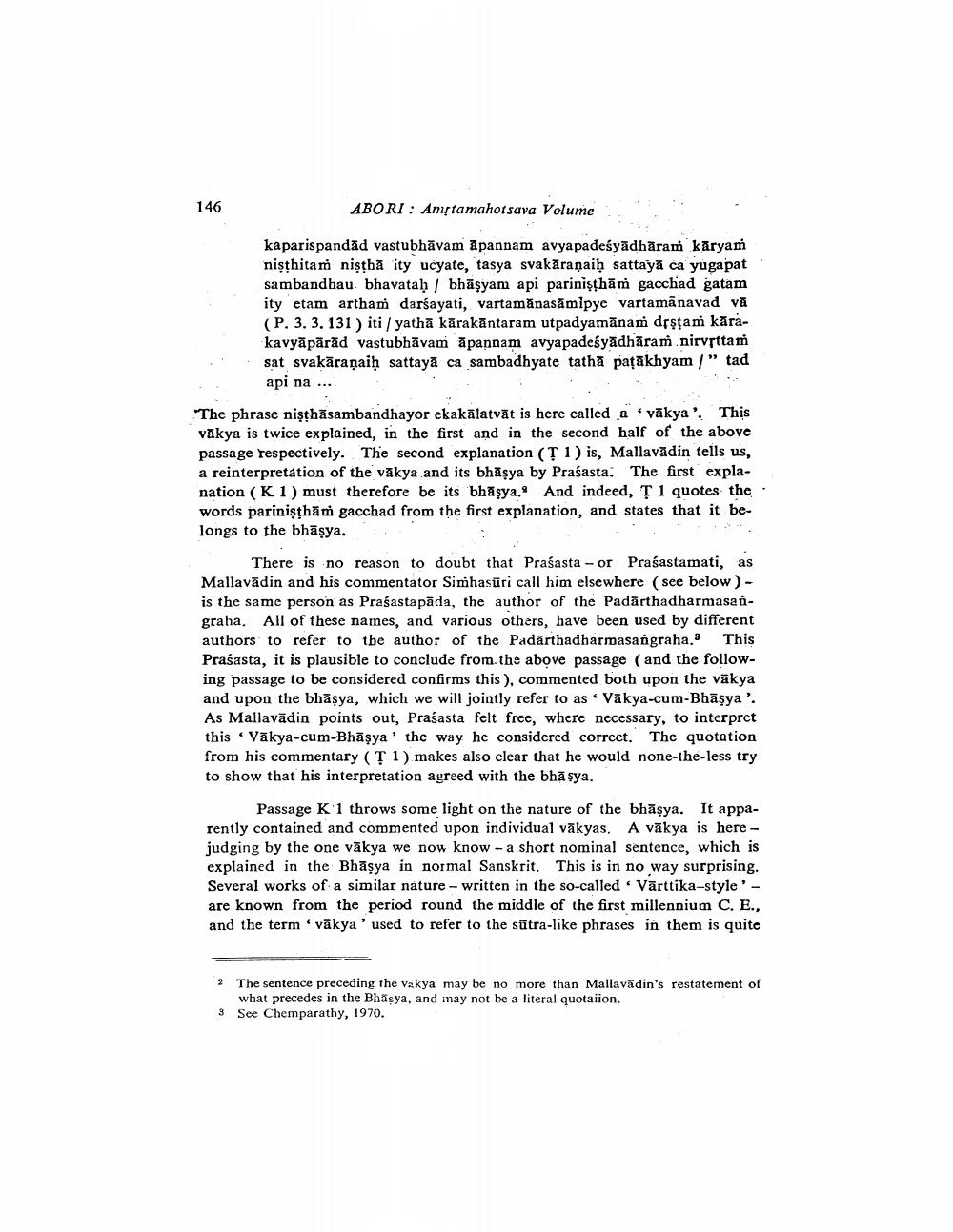Book Title: Vaisesika Vakya And Bhasya Author(s): Johannes Bronkhorst Publisher: Johannes Bronkhorst View full book textPage 2
________________ 146 ABORI: Amptamahotsava Volume kaparispandad vastubhavam apannam avyapadeśyādhāram kāryam nisthitam nistha ity ucyate, tasya svakaraṇaiḥ sattaya ca yugapat sambandhau bhavataḥ / bhāṣyam api pariniṣṭhām gacchad gatam ity etam artham darśayati, vartamănasămipye vartamānavad vā (P. 3. 3. 131) iti / yathā kārakantaram utpadyamānam dṛṣṭam kārakavyāparād vastubhavam apaṇnam avyapadesyadharam nirvṛttam sat svakaraṇaiḥ sattaya ca sambadhyate tatha paṭakhyam /" tad api na... The phrase nişṭhāsambandhayor ekakalatvāt is here called a vakya'. This vakya is twice explained, in the first and in the second half of the above passage respectively. The second explanation (T1) is, Mallavädin tells us, a reinterpretation of the vakya and its bhāṣya by Prasasta. The first explanation (K 1) must therefore be its bhasya. And indeed, T 1 quotes the words pariniṣṭhām gacchad from the first explanation, and states that it belongs to the bhāṣya. There is no reason to doubt that Prasasta - or Prasastamati, as Mallavadin and his commentator Simhasuri call him elsewhere (see below) - is the same person as Prasastapāda, the author of the Padarthadharmasangraha. All of these names, and various others, have been used by different authors to refer to the author of the Padarthadharmasangraha." This Prasasta, it is plausible to conclude from the above passage (and the following passage to be considered confirms this), commented both upon the vakya and upon the bhāṣya, which we will jointly refer to as Vakya-cum-Bhāṣya'. As Mallavādin points out, Prasasta felt free, where necessary, to interpret this Vakya-cum-Bhāṣya' the way he considered correct. The quotation from his commentary (T1) makes also clear that he would none-the-less try to show that his interpretation agreed with the bha sya. Passage K 1 throws some light on the nature of the bhāṣya. It apparently contained and commented upon individual vakyas. A vākya is here - judging by the one vakya we now know - a short nominal sentence, which is explained in the Bhāṣya in normal Sanskrit. This is in no way surprising. Several works of a similar nature-written in the so-called Varttika-style' - are known from the period round the middle of the first millennium C. E., and the term vakya' used to refer to the sutra-like phrases in them is quite 2 The sentence preceding the vakya may be no more than Mallavadin's restatement of what precedes in the Bhasya, and may not be a literal quotaiion. 3 See Chemparathy, 1970.Page Navigation
1 2 3 4 5 6 7 8 9 10 11 12 13 14 15 16 17 18 19 20 21 22 ... 25
